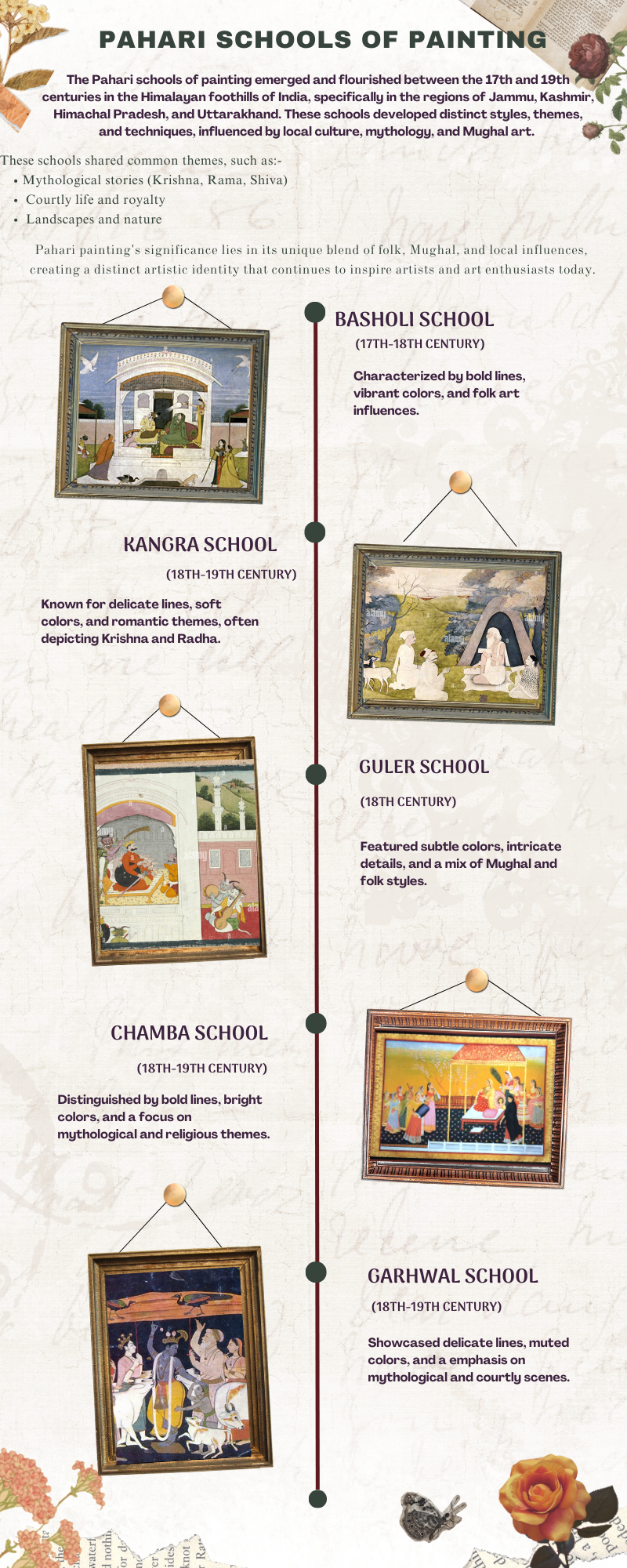Examine the differences between Pattachitra’s and Tanjore’s painting methods and supplies. What sets apart these two conventional Indian art forms?
Model Answer Introduction Prehistoric cave paintings in India offer a remarkable window into the lives and artistic expressions of ancient communities. These artworks, dating back to the Upper Palaeolithic era, were created on cave walls and rock shelters across the country. They reflect the culturaRead more
Model Answer
Introduction
Prehistoric cave paintings in India offer a remarkable window into the lives and artistic expressions of ancient communities. These artworks, dating back to the Upper Palaeolithic era, were created on cave walls and rock shelters across the country. They reflect the cultural, spiritual, and everyday concerns of prehistoric people, providing a rich tapestry of themes ranging from survival to spirituality.
Major Themes Depicted in Prehistoric Paintings of India
1. Animals and Hunting
A significant number of prehistoric paintings depict animals, especially large game like elephants, deer, and rhinoceroses, as well as hunting scenes. These portrayals reveal the importance of animals in their lives, either as food sources or as elements of their environment.
- Example: A famous painting from Bhimbetka shows a man being hunted by a beast, showcasing the precarious balance of survival.
2. Rituals and Ceremonies
Scenes of communal dances, shamans, and religious gatherings hint at ritualistic or spiritual practices. These images reflect the social and religious life of ancient people, indicating the significance of collective and ceremonial activities.
- Example: The Lakhudiyar rock paintings in Uttarakhand feature dancing figures in a communal setting.
3. Daily Life and Occupation
Paintings also depict activities like farming, food preparation, and tool-making, highlighting the daily struggles and subsistence practices of prehistoric societies.
- Example: The Jogimara cave art in Chhattisgarh portrays women grinding food and individuals gathering fruit.
4. Symbolic and Abstract Art
Geometric patterns, grids, and dots frequently appear in prehistoric art, suggesting symbolic meanings or decorative purposes.
- Example: Bhimbetka rock shelters exhibit intricate designs whose meanings remain mysterious.
5. Mythology and Folklore
Some paintings depict supernatural beings, gods, or mythical creatures, hinting at a vibrant belief system and folklore among these communities.
- Example: Kupgallu rock art in Karnataka showcases mythical beings, possibly deities or legendary figures.
Conclusion
The prehistoric paintings of India, despite their ancient origins, demonstrate an exceptional pictorial quality. Created with limited tools and materials, they offer a compelling narrative of the environment and cultural practices of early societies. These artworks continue to charm and inspire, bridging the gap between modern observers and our prehistoric ancestors.
See less

Tanjore paintings and Pattachitra are two distinct traditional forms of Indian art, each with its own unique techniques, materials, and cultural significance. Here’s a comparison of their characteristics: Tanjore Paintings Techniques Gilding: A hallmark of Tanjore paintings is the extensive use of gRead more
Tanjore paintings and Pattachitra are two distinct traditional forms of Indian art, each with its own unique techniques, materials, and cultural significance. Here’s a comparison of their characteristics:
Tanjore Paintings
Techniques
Materials
Themes
Pattachitra
Techniques
Materials
Themes
Distinguishing Features
Conclusion
In summary, Tanjore paintings and Pattachitra are both rich traditional forms of Indian art, distinguished by their techniques, materials, and thematic focus. While Tanjore paintings are characterized by their use of gold leaf, opulence, and emphasis on divine figures, Pattachitra showcases intricate narratives and earthy colors rooted in local folklore and mythology. Both forms reflect the cultural heritage of their respective regions and contribute to the diverse tapestry of Indian art
See less